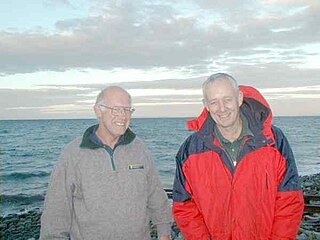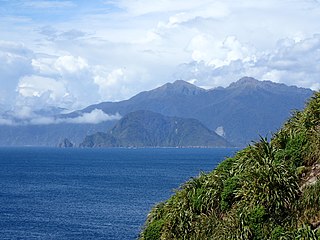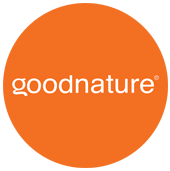Island geography and flora
| | This section is empty. You can help by adding to it. (February 2022) |
The Fiordland Islands restoration programme is run by the New Zealand Department of Conservation. [1] The purpose of the programme is to eradicate pests on key islands around Fiordland National Park, once the islands are considered predator free endangered native species will be translocated to the islands.
The programme's intentions are to create a safe home for endangered species to build up population numbers before some species can be translocated to different islands or to the New Zealand mainland.
The New Zealand conservationist Richard Henry rescued rare birds such as kākāpō and kiwi from the Fiordland mainland. Henry translocated the birds to islands off Fiordland's coast, notably Resolution Island. [2]
Ngāi Tahu is the iwi with mana whenua (historic rights and oversight) over Fiordland National Park.
The main pest species on the island are stoats, red deer, kiore, Norway rats, and ship rats.
As deer are known to be good swimmers populations were established on all but the most outer islands in Fiordland. Deer never colonised Breaksea or Chalky Island, and were later eradicated from Anchor Island and Secretary Island in 2002 and 2006 respectively. [3]
Some key species for this project are; kākāpō, takahē, tieke, mohua, fiordland skink and rock wren.
Kākāpō can be found on Chalky and Anchor Island as a part of the Kākāpō Recovery Programme. Kākāpō previously lived on the Fiordland mainland and past translocations occurred on Resolution Island by Richard Henry, although this was unsuccessful.
| | This section is empty. You can help by adding to it. (February 2022) |

The kākāpō, sometimes known as the owl parrot, is a species of large, nocturnal, ground-dwelling parrots of the super-family Strigopoidea. It is endemic to New Zealand.

Fiordland National Park occupies the southwest corner of the South Island of New Zealand. It is by far the largest of the 13 national parks in New Zealand, with an area of 12,607 square kilometres (4,868 sq mi), and a major part of the Te Wahipounamu World Heritage Site. The park is administered by the Department of Conservation.

Resolution Island or Tau Moana (Māori) is the largest island in the Fiordland region of southwest New Zealand, covering a total of 208 km2 (80 sq mi). It is the country's seventh largest island, and the second largest uninhabited island. Resolution Island is separated from the mainland of the South Island by Tamatea / Dusky Sound, Te Puaitaha / Breaksea Sound, and Acheron Passage. The island is part of the Fiordland National Park.

Codfish Island / Whenua Hou is a small island located to the west of Stewart Island in southern New Zealand. It reaches a height of 250 m (820 ft) close to the south coast. The island is home to Sirocco, an internationally famous kākāpō, a rare species of parrot.

Little Barrier Island, or Hauturu in Māori, lies off the northeastern coast of New Zealand's North Island. Located 80 kilometres (50 mi) to the north of Auckland, the island is separated from the mainland to the west by Jellicoe Channel, and from the larger Great Barrier Island to the east by Cradock Channel. The two aptly named islands shelter the Hauraki Gulf from many of the storms of the Pacific Ocean.

The yellowhead or mohua is a small insectivorous passerine bird endemic to the South Island of New Zealand. Once a common forest bird, its numbers declined drastically after the introduction of rats and stoats, and it is now near threatened.

Donald Vincent Merton was a New Zealand conservationist best known for saving the black robin from extinction. He also discovered the lek breeding system of the kākāpō.

Secretary Island is an island in southwestern New Zealand, lying entirely within Fiordland National Park. Roughly triangular in shape, it lies between Doubtful Sound / Patea in the south and Te Awa-o-Tū / Thompson Sound in the north, with its west coast facing the Tasman Sea. To the east of the island, Pendulo Reach connects Te Awa-o-Tū / Thompson Sound with Doubtful Sound / Patea. Steeply sloped, the entirely bush-clad island rises to a chain of several peaks higher than 1000 metres. The highest of these is the 1,196-metre (3,924 ft) Mount Grono, the highest peak in the main New Zealand chain not located in the North or South Island. The island also contains three lakes. The largest, Secretary Lake, over 600 metres (2,000 ft) long, is located beneath Mount Grono at an altitude of 550 metres (1,800 ft).
Chalky Island or Te Kākahu-o-Tamatea is an island in the southwest of New Zealand, and is part of Fiordland National Park. It lies at the entrance to Taiari / Chalky Inlet, next to Rakituma / Preservation Inlet, at the southwestern tip of the South Island, 10 kilometres (6 mi) northwest of Puysegur Point, 15 kilometres (9 mi) southeast of West Cape, and 140 kilometres (87 mi) west of Invercargill.

Anchor Island is an island in Dusky Sound in Fiordland.

The stoat was introduced into New Zealand to control introduced rabbits and hares, but is now a major threat to the native bird population. The natural range of the stoat is limited to parts of the Northern Hemisphere. Immediately before human settlement, New Zealand did not have any land-based mammals apart from bats, but Polynesian and European settlers introduced a wide variety of animals. Rarely, in Southland, the fur of stoats has been reported to turn white, being the fur known as ermine, which adorns royal robes.

The Fiordland skink is a species of skink endemic to the Fiordland temperate forests ecoregion of South Island, New Zealand. The Fiordland skink is found on one mainland locations and the exposed rocky shores of numerous islands along the Fiordland coast. Their distribution has declined due to introduced predators. Currently it lives only on foreshore rocks and boulder beaches on the Fiordland coast. It is abundant, even extremely abundant, in areas free from mammalian predators, but it barely survives where predators are present.

Breaksea Island is a rugged 1.6 km2 (1 sq mi) island in the southwest of New Zealand, and is part of Fiordland National Park. Its highest point is 350 m (1,148 ft) asl and it lies about 2 km (1.2 mi) from the mainland in the entrance to Te Puaitaha / Breaksea Sound, north of the much larger Resolution Island. It is covered in temperate rainforest and was the site of one of the first successful campaigns to eradicate rats from a sizeable island.

The Te Kakahu skink is a critically endangered species of skink native to New Zealand. When discovered, the entire species was inhabiting a single patch of clifftop vegetation on Chalky Island in Fiordland National Park.

Bauza Island lies immediately south of the much larger Secretary Island in the outer reaches of Doubtful Sound / Patea, in Fiordland National Park on New Zealand's South Island. The less than one kilometre wide Patea passage to the south of the island is the main entrance to Doubtful Sound. To the north, the island is separated from Secretary Island by the narrow Te Awaatu Channel, also referred to as "The Gut", only 200 metres (660 ft) wide at its narrowest point. The waters between the two islands are protected by the Te Awaatu Channel Marine Reserve. Doubtful Sound tour boats routinely travel through this channel.

Coal Island is an island in Fiordland, in the southwest of New Zealand's South Island. Its Māori name is Te Puka-Hereka Island, which translated means The Tied Anchor, but the island is commonly known as Coal Island. Situated at the southern end of Fiordland's west coast, Coal Island lies in the entrance to Rakituma / Preservation Inlet, between Puysegur Point and Gulches Head. This area contains the southernmost fiords of Fiordland, some 200 kilometres (120 mi) south of Milford Sound / Piopiotahi.

Goodnature is a New Zealand company founded in 2005 by Robbie van Dam and Craig Bond. They specialize in the production of traps designed for the control of animal pests such as stoats, rats, mice and possums.
Taiari / Chalky Inlet is one of the southernmost fiords in Fiordland, in the southwestern corner of New Zealand's South Island and part of Fiordland National Park. As with the neighbouring fiords of Tamatea / Dusky Sound to the north and Rakituma / Preservation Inlet to the south, Taiari / Chalky Inlet is a complex fiord with many channels and islands along its roughly 28 km (17 mi) length. Most notably, this includes the sections Moana-whenua-pōuri / Edwardson Sound and Te Korowhakaunu / Kanáris Sound, which split at Divide Head in the middle of Taiari and each extend for roughly 10 km (6.2 mi) inland in a V-shape.

Island reserves or island sanctuaries are offshore islands of New Zealand set aside by the New Zealand Government as reserves for endemic and native species.

Taumoana Marine Reserve is a marine reserve covering an area of 464 hectares in Fiordland on New Zealand's South Island. It was established in 2005 and is administered by the Department of Conservation. It is located next to the Five Fingers Peninsula, at the entrance to Tamatea / Dusky Sound.